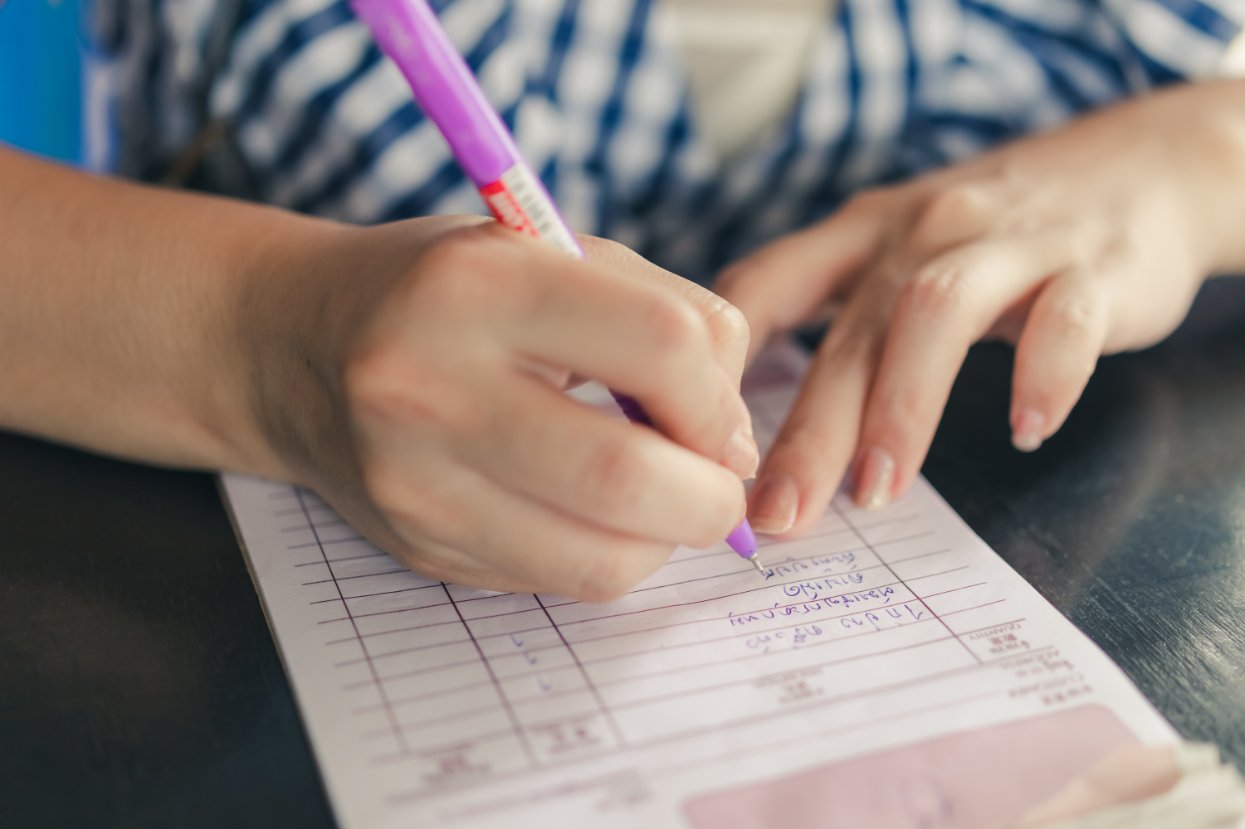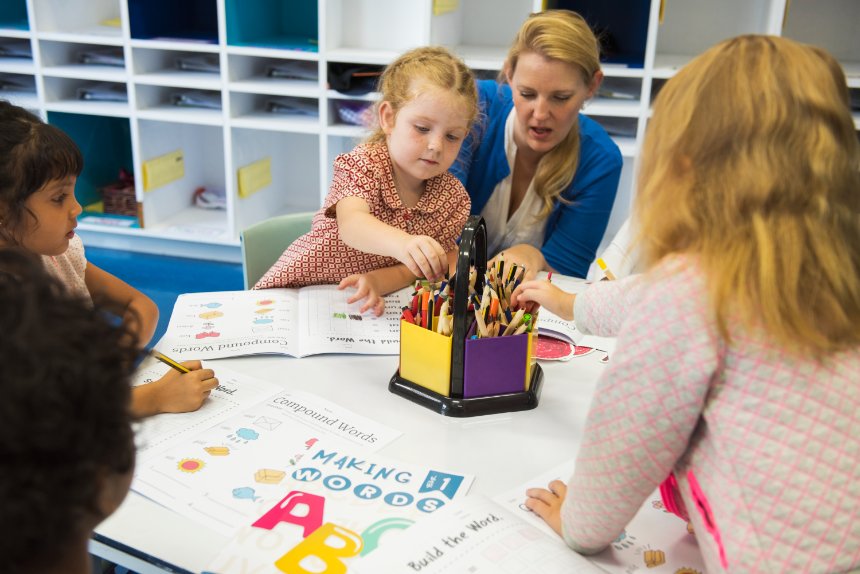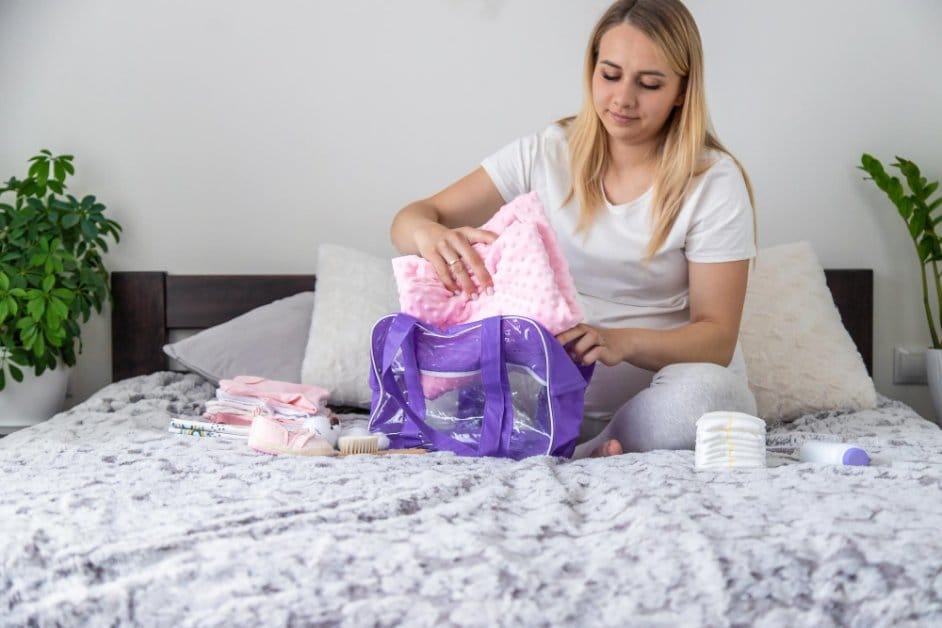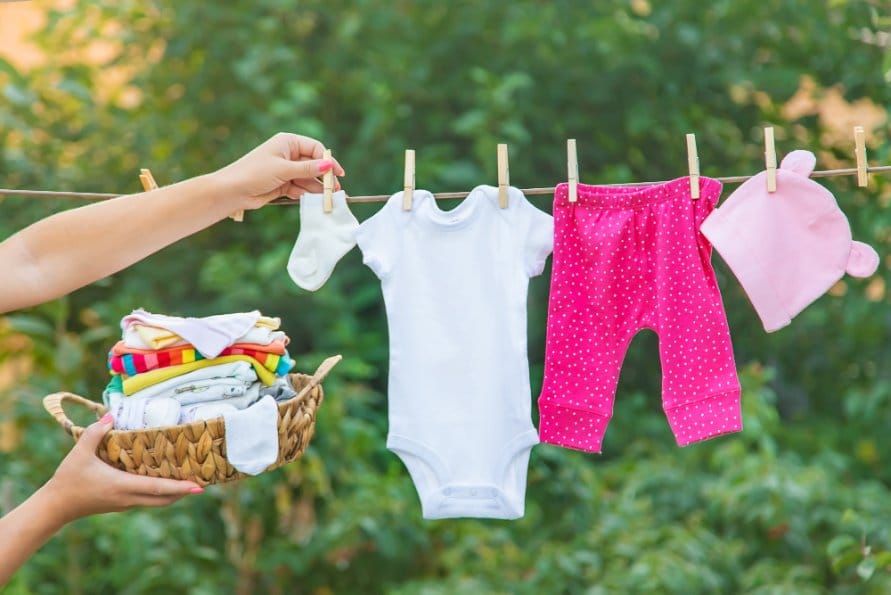Everything you need to know about labeling your child’s clothes, items, and supplies for daycare success
Table of Contents
- Why Labeling is Essential for Daycare
- Complete Daycare Labeling Checklist
- Best Labeling Methods and Techniques
- Age-Specific Labeling Strategies
- Allergy and Medical Safety Labeling
- Common Labeling Mistakes to Avoid
- Understanding Daycare Policy Requirements
- Budget-Friendly vs Premium Labeling Options
- Troubleshooting Label Problems
- Frequently Asked Questions
- Conclusion
Sending your toddler to daycare brings excitement and anxiety in equal measure. Among all the preparations, labeling your child’s belongings might seem like a small detail, but it’s one of the most important steps you can take. Proper labeling prevents lost items, reduces confusion, and helps maintain hygiene standards in busy daycare environments.
Every parent has experienced that sinking feeling when their child comes home missing a favorite jacket or pair of shoes. In daycare settings where dozens of children share space, similar items get mixed up constantly. Clear, durable labeling solves this problem while giving you peace of mind.
Why Labeling is Essential for Daycare Success

Labeling serves multiple critical purposes beyond simple identification. Understanding these reasons helps you approach labeling strategically rather than as a chore.
Preventing Lost and Mixed-Up Items
Daycare centers handle hundreds of items daily. Children frequently change clothes for meals, naps, outdoor play, and accidents. Without clear labels, even the most organized staff struggle to match belongings with their owners.
When items do get misplaced, labels make quick identification possible. Staff can immediately see which child owns a dropped jacket or forgotten water bottle, reducing the time items spend in lost-and-found boxes.
Supporting Health and Hygiene Standards
Post-pandemic awareness has heightened the importance of preventing cross-contamination. Labeled items help daycare staff avoid accidental sharing of personal belongings, reducing the spread of germs and illnesses.
For children with allergies or skin sensitivities, using the wrong clothes or bottles can trigger reactions. Hypoallergenic clothing choices combined with proper labeling protect vulnerable children from exposure to problematic materials or detergents.
Enhancing Daily Organization
Well-labeled belongings streamline daily routines for busy daycare staff. Quick identification means faster transitions during dress-up time, meal preparation, and pickup procedures.
This organization benefits your child too. Recognizing their own labeled items builds independence and responsibility, valuable skills for their development.
Quick Tip
Involve your child in the labeling process. Let them help apply stickers or choose label designs. This builds excitement about daycare while helping them recognize their belongings.
Complete Daycare Labeling Checklist

Every item your child brings to daycare should have a label. This comprehensive checklist ensures you don’t miss anything important.
Clothing Items
Essential Clothing to Label:
- All shirts, pants, and everyday clothing items
- Socks and underwear (yes, even these get lost!)
- Outer jackets, coats, and hoodies
- Hats, mittens, and seasonal accessories
- Spare clothes for accidents and spills
- Sleep items like blankets and special comfort clothes
- Indoor shoes and slippers
- Swimwear for water play days
Personal Care and Feeding Items
These items require special attention since they directly impact your child’s health and safety.
- Bottles and sippy cups: Must include name, date, and time requirements
- Lunch boxes and food containers: Label both the container and lid
- Diapers and wipes: Label the packages, not individual items
- Diaper cream and medications: Critical for preventing mix-ups
- Pacifiers: Use waterproof labels or labeled clips
- Teething toys and comfort items: Frequently shared accidentally
Storage and Transportation Items
- Diaper bags and backpacks
- Nap mats and pillows
- Art supplies and special projects
- Seasonal gear storage bags
Important Note
Some daycare centers have specific labeling requirements, especially for bottles and food items. Always check your facility’s policies before choosing labeling methods.
Best Labeling Methods and Techniques
Different labeling methods work better for different items and situations. Understanding your options helps you choose the most effective approach for each type of belonging.
Iron-On Labels
Perfect for clothing that gets frequent washing. These labels bond permanently to fabric using heat application.
Pros:
- Extremely durable
- Washing machine safe
- Professional appearance
- Long-lasting solution
Cons:
- Requires iron and time
- Permanent application
- Not suitable for delicate fabrics
- Higher upfront cost
Stick-On Labels
Quick and easy application for various surfaces. Ideal for temporary labeling or items that won’t be washed frequently.
Pros:
- Instant application
- No special tools needed
- Versatile for many surfaces
- Removable when needed
Cons:
- May peel over time
- Less durable than iron-on
- Can leave residue
- Limited washing resistance
Clothing Stamps
Fabric-safe ink stamps create permanent labels directly on clothing. Great for high-volume labeling.
Pros:
- Very cost-effective
- Fast application
- Permanent marking
- Works on most fabrics
Cons:
- Less professional look
- May fade over time
- Permanent (can’t remove)
- Requires steady hand
Sew-In Labels
Traditional fabric labels sewn directly into clothing seams or tags. Most durable long-term option.
Pros:
- Extremely durable
- Professional appearance
- Won’t peel or fade
- Comfortable for children
Cons:
- Requires sewing skills
- Time-intensive process
- Permanent application
- Higher labor investment
Application Best Practices
Label Application Process
Proper application significantly extends label life. Always start with clean, dry surfaces and follow manufacturer instructions exactly. For iron-on labels, use the correct temperature and timing to ensure strong adhesion.
| Label Type | Best For | Durability | Cost Per Label | Application Time |
|---|---|---|---|---|
| Iron-On | Everyday clothing | Excellent | $0.50-1.00 | 2-3 minutes |
| Stick-On | Shoes, bags, bottles | Good | $0.25-0.50 | 30 seconds |
| Clothing Stamp | Large quantities | Good | $0.10-0.20 | 15 seconds |
| Sew-In | Premium items | Excellent | $0.75-1.50 | 5-10 minutes |
Age-Specific Labeling Strategies
Different ages have unique labeling needs based on their developmental stage and daycare activities.
Infants (0-12 months)
Focus on bottles, formula containers, and medical items. Safety and hygiene are top priorities.
Toddlers (1-3 years)
Emphasize daily clothing, comfort items, and potty training supplies.
Preschoolers (3-5 years)
Include learning materials, art supplies, and independence-building labels like left/right shoe markers.
Infant Labeling Essentials
Infants require the most careful labeling attention due to feeding schedules and medical needs.
- Bottle labeling: Must include child’s name, date, and time prepared
- Formula containers: Label with name and any special preparation instructions
- Medication: Requires clear dosage and administration information
- Comfort items: Blankets and pacifiers that provide security
Toddler-Specific Considerations
Toddlers are active and curious, requiring durable labels that withstand their exploration.
- Multiple clothing changes: Accidents happen frequently at this age
- Outdoor gear: Jackets and shoes for playground activities
- Independence items: Potty training supplies and self-care items
Allergy and Medical Safety Labeling
Children with allergies or medical conditions require special labeling attention to ensure their safety in daycare environments.
Critical Safety Information
Over 60% of food allergy reactions in schools occur in preschool and daycare settings. Proper medical labeling can be life-saving.
Medical Information Labels
These labels should be bright, clear, and immediately visible to all staff members.
- Allergy alerts: Food allergies, environmental sensitivities, and contact restrictions
- Medical conditions: Asthma, diabetes, seizure disorders, and other conditions
- Emergency contacts: Parent, doctor, and backup contact information
- Medication instructions: Dosage, timing, and administration details
Food and Feeding Safety
Careful labeling prevents dangerous cross-contamination and ensures proper nutrition.
- Label all food containers with allergen information
- Include preparation instructions for special diets
- Mark utensils and dishes used by children with allergies
- Provide emergency medication location information
Common Labeling Mistakes to Avoid
Learning from common mistakes saves time, money, and frustration. These errors happen frequently but are easily preventable.
Label Application Errors
- Using regular markers on baby items: Always use non-toxic markers for items that contact your child
- Labeling bottles after refrigeration: Cold surfaces make writing difficult and reduce adhesion
- Skipping the 24-hour wait: Washing too soon causes labels to peel prematurely
- Wrong label placement: Put labels where they’ll be visible but won’t irritate skin
Information and Coverage Mistakes
- Forgetting backup items: Spare clothes need labels too
- Incomplete contact information: Include phone numbers and emergency contacts
- Not checking daycare requirements: Each facility has specific labeling policies
- Using non-washable labels: Choose labels that survive proper fabric care
Understanding Daycare Policy Requirements

Different daycare centers have varying labeling requirements based on their size, licensing, and safety protocols.
Common Policy Requirements
- Bottle labeling standards: Name, date, time, and content information
- Medication labeling: Prescription labels, dosage instructions, and expiration dates
- Food allergy protocols: Special marking systems for allergen-free items
- Personal item identification: Minimum information required for clothing and belongings
Questions to Ask Your Daycare
Policy Clarification Checklist:
- What specific information must appear on bottle labels?
- Are there color-coding requirements for different items?
- How should medications be labeled and stored?
- What happens to unlabeled items?
- Are there preferred labeling methods or brands?
- How often should labels be updated or refreshed?
Budget-Friendly vs Premium Labeling Options
Labeling costs can add up quickly, but smart choices help you balance quality with affordability.
Budget-Friendly Solutions
- Permanent markers: $2-5 for basic labeling needs
- Masking tape: Temporary solution for testing label placement
- DIY laminated labels: Create your own waterproof labels
- Bulk ordering: Buy labels in larger quantities for better per-unit pricing
Premium Investment Options
- Professional label sets: $30-50 for comprehensive daycare packages
- Custom clothing stamps: $25-40 for hundreds of applications
- Designer label collections: $50-100 for personalized, themed label sets
- Waterproof label systems: $40-80 for dishwasher and washing machine safe options
| Budget Level | Initial Cost | Cost Per Item | Durability | Best For |
|---|---|---|---|---|
| Basic | $10-20 | $0.10-0.25 | 6-12 months | Short-term daycare |
| Standard | $30-50 | $0.25-0.50 | 1-2 years | Regular daycare attendance |
| Premium | $60-100 | $0.50-1.00 | 2+ years | Multiple children/long-term |
Troubleshooting Common Label Problems
Even with careful application, labels sometimes fail. Knowing how to address these issues keeps your labeling system working effectively.
Labels Won’t Stick
- Surface preparation: Clean with alcohol and let dry completely
- Temperature issues: Apply labels at room temperature for better adhesion
- Fabric compatibility: Some synthetic fabrics resist adhesive labels
- Moisture problems: Ensure surfaces are completely dry before application
Fading and Peeling Issues
- Heat damage: Use lower dryer temperatures to protect labels
- Chemical exposure: Some detergents break down label adhesives
- Age-related failure: Replace labels every 6-12 months as needed
- Washing frequency: High-use items need more durable labeling methods
Special Item Challenges
How to Label Kids’ Clothes Without Labels
When clothing lacks care tags, create your own labeling spots:
- Use fabric-safe stamps directly on inside seams
- Apply iron-on labels to flat areas like waistbands
- Sew small fabric labels into existing seams
- Use temporary stick-on labels on smooth areas
How to Label a Kids Swimsuit
Swimwear requires special waterproof approaches:
- Use silicone-based waterproof labels
- Apply labels to care tags if present
- Consider temporary tattoo-style labels for pool days
- Use fabric markers on inside seams
How to Label Socks for Daycare
Socks are frequently lost items that need creative solutions:
- Use mini iron-on labels on the toe area
- Apply stick-on labels to the inside ankle area
- Use fabric stamps on the sole area
- Consider color-coding with permanent fabric markers
Pro Tip for Sock Labeling
Label both socks in a pair, even if they’re identical. This doubles your chances of identification if one sock gets separated.
Seasonal and Special Event Labeling
Different seasons and special activities require adjusted labeling strategies.
Summer and Water Play
- Sunscreen bottles: Essential for outdoor activities
- Swimwear and towels: Waterproof labels required
- Sun hats and sunglasses: Easy to lose in playground areas
- Water shoes: Frequently mixed up during water activities
Winter Weather Gear
- Heavy coats and jackets: Use large, visible labels
- Mittens and gloves: Consider connecting strings to prevent loss
- Boots and snow pants: Label both inside and outside surfaces
- Warm accessories: Scarves, hats, and ear warmers need durable labels
Building Independence Through Labeling
Smart labeling choices help children develop responsibility and self-reliance skills.
Visual Recognition Systems
- Color coding: Assign specific colors to your child’s items
- Symbol systems: Use recognizable icons alongside names
- Photo labels: Include small pictures for pre-readers
- Pattern recognition: Choose distinctive designs your child knows
Teaching Responsibility
- Involve children in labeling: Let them help apply stickers and choose designs
- Create recognition games: Practice identifying labeled items at home
- Establish routines: Teach children to check for their labels
- Celebrate success: Praise children when they identify their own belongings
Modern Labeling Technology
New technologies offer innovative solutions for busy parents.
Digital Integration Options
- QR code labels: Link to digital contact information
- Smart tags: Bluetooth-enabled tracking for high-value items
- Photo documentation: Digital records of labeled items
- App-based systems: Manage labeling inventory digitally
Eco-Friendly Labeling
- Biodegradable labels: Environmentally conscious options
- Reusable systems: Labels that transfer between items
- Natural fiber options: Organic cotton sew-in labels
- Minimal packaging: Reduce waste in label purchasing
Frequently Asked Questions
Do you label everything for daycare?
Yes, you should label every item your child brings to daycare. This includes all clothing, bottles, food containers, comfort items, and personal belongings. Even items you think won’t get mixed up should have labels, as daycare environments are busy and mistakes happen easily.
Do you need to label clothes for nursery?
Most nurseries and daycare centers require labeled clothing for health, safety, and organizational reasons. Check your specific facility’s policy, but labeling is generally mandatory and helps prevent lost items and mix-ups between children.
Can I use a Sharpie to label clothing?
Regular Sharpies aren’t ideal for clothing that contacts your child’s skin. Use fabric-safe permanent markers or laundry markers specifically designed for textiles. These are non-toxic and won’t bleed or fade as easily with washing.
Do I label socks for daycare?
Yes, socks are among the most commonly lost daycare items. Label them on the toe area or inside ankle area using mini iron-on labels or fabric stamps. This small step prevents many lost sock situations.
How to sew name labels into school uniform?
Sew labels into existing seams or care tags using small, secure stitches. Place labels where they won’t irritate your child’s skin, typically at the back neck area or side seams. Use strong thread and double-stitch for durability.
Why do you not put your child’s name on clothing?
Some parents worry about stranger safety, preferring not to put names on visible outer clothing where strangers could see them. For daycare, place labels inside clothing or use initials on outer items while using full names on inside labels.
Do you label each diaper for daycare?
No, you don’t label individual diapers. Instead, label the diaper package or bag. Daycare staff keep diapers organized by child in cubbies or designated storage areas, so package labeling is sufficient.
Should you label your child’s school supplies?
Yes, label all school supplies including crayons, pencils, notebooks, and art supplies. Children frequently share materials, and labeled supplies ensure your child gets their items back and prevent disputes over ownership.
Is labelling compulsory?
Most licensed daycare centers require labeling for health and safety compliance. While specific requirements vary by location and facility, labeling is typically mandatory for food items, medications, and personal belongings.
What are the three rules for labeling clothing?
The three essential rules are: 1) Use durable, wash-safe labels that won’t fade or peel, 2) Place labels where they’re visible to staff but won’t irritate your child’s skin, and 3) Include complete, legible information including your child’s full name and contact details.
How to prevent wrong labelling?
Double-check all information before applying labels, use clear, legible writing or printing, choose contrasting colors for visibility, and regularly inspect labels to ensure they remain readable and securely attached.
What are three reasons not to label children?
This question refers to psychological labeling, not physical item labeling. Avoid labeling children as “difficult,” “shy,” or “problem children” because it can limit their self-perception, create negative expectations, and prevent them from developing beyond these labels.
Expert Recommendations and Best Practices
Daycare directors and child development experts offer valuable insights for effective labeling strategies.
Daycare Director Insights
“The most effective labels are those that remain clearly visible and readable after multiple washes. Iron-on labels with bold, simple fonts work best for busy staff who need to identify items quickly during hectic daily routines.” – Sarah Mitchell, Licensed Daycare Director
Child Development Considerations
- Age-appropriate recognition: Use pictures and symbols for younger children who can’t read yet
- Independence building: Choose labels that help children identify their own belongings
- Comfort factors: Ensure labels don’t cause skin irritation or discomfort
- Emotional security: Familiar labeled items provide comfort in new environments
Safety Expert Recommendations
- Emergency information: Include critical medical and contact information on key items
- Allergy alerts: Use bright, unmistakable labeling for children with allergies
- Non-toxic materials: Choose labels and markers safe for children’s use
- Clear instructions: Provide detailed medication and care instructions on relevant items
Label Maintenance and Replacement
Maintaining your labeling system ensures continued effectiveness throughout your child’s daycare experience.
Regular Inspection Schedule
- Weekly checks: Inspect high-use items like daily clothing and bottles
- Monthly reviews: Examine seasonal items and backup supplies
- Seasonal updates: Replace weather-damaged labels and update contact information
- Size updates: Relabel items when children outgrow and replace clothing
Replacement Strategies
- Bulk preparation: Keep extra labels ready for quick replacements
- Emergency kit: Pack temporary labels for unexpected needs
- Quality tracking: Note which label types last longest for future purchases
- Cost management: Budget for regular label replacement in daycare expenses
Conclusion
Effective daycare labeling transforms a potentially stressful aspect of childcare into a manageable, organized system. The time you invest in proper labeling pays dividends in prevented lost items, reduced stress, and smoother daily routines.
Essential Takeaways
- Label everything: Every item your child brings to daycare should have clear identification
- Choose appropriate methods: Match labeling techniques to item types and usage frequency
- Prioritize safety: Use non-toxic materials and include critical medical information
- Plan for durability: Invest in quality labels that withstand daily wear and frequent washing
- Stay organized: Regular maintenance and replacement keep your system working effectively
Action Steps for Success
- Assess your needs: Inventory all items requiring labels and determine your budget
- Choose your methods: Select labeling techniques based on item types and durability requirements
- Check daycare policies: Confirm specific requirements with your facility before purchasing supplies
- Create a system: Establish routines for applying, maintaining, and replacing labels
- Involve your child: Make labeling a fun activity that builds independence and responsibility
Long-term Benefits
Beyond preventing lost items, effective labeling teaches children responsibility, supports their independence, and provides peace of mind for parents. When choosing durable clothes for toddlers, remember that well-labeled, quality items serve your family longer and provide better value.
The investment in a comprehensive labeling system pays for itself through prevented losses and reduced stress. Your organized approach sets a positive example for your child while ensuring their daycare experience starts on the right foot.
Remember that labeling is an ongoing process, not a one-time task. As your child grows and their needs change, your labeling strategy should evolve too. Stay flexible, communicate with daycare staff, and adjust your approach based on what works best for your family’s unique situation.



